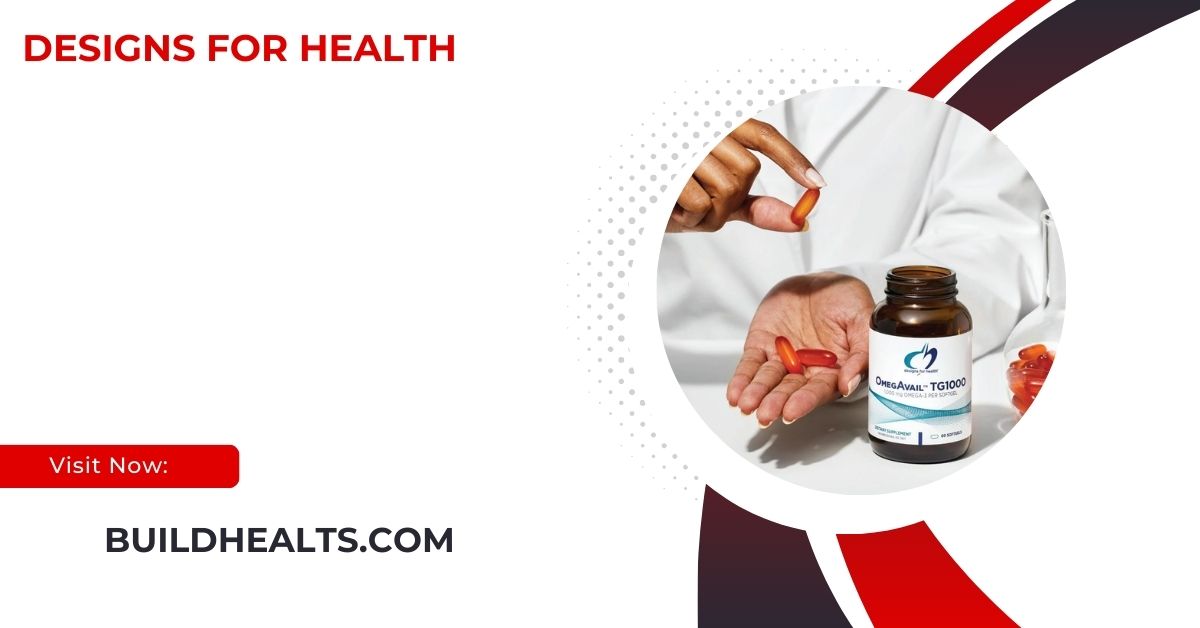Designs for health create spaces, products, and systems that enhance physical and mental well-being, including healthcare facilities, home design, and wellness products.
This article explores the importance of designs for health, their role in improving physical and mental health, and how they can influence a healthier lifestyle. We will look at different types of health-focused designs, such as healthcare facilities, home design, and product design, to understand how these designs contribute to a healthier society.
What Are Designs for Health?

Designs for health refer to the planning and creation of spaces, products, and systems that improve or promote physical and mental well-being. This can include everything from designing a hospital that enhances patient care to creating homes or workplaces that encourage healthy habits. Essentially, it’s about integrating health-promoting elements into the design process of products, services, and environments.
Key Aspects of Designs for Health:
- Accessibility: Health designs must be inclusive, ensuring easy access for people of all ages, physical abilities, and socioeconomic backgrounds, allowing everyone to benefit from healthcare services without barriers.
- Ergonomics: Proper ergonomic design promotes comfort and prevents injuries by ensuring that workspaces, seating, and medical equipment support the body’s natural posture, reducing strain and improving overall physical well-being.
- Aesthetics: Good design enhances mental health by incorporating visually pleasing and calming elements into healthcare spaces, fostering a positive environment that can reduce stress and improve mood for patients and staff.
- Sustainability: Health designs should prioritize eco-friendly materials and energy-efficient systems, contributing to long-term environmental health while enhancing the overall well-being of individuals and communities by reducing environmental impact.
How Designs for Health Impact Physical Health:
Designs for health have a significant impact on physical health, both in medical environments and in everyday life. Here are a few ways health-conscious designs can benefit physical health:
Healthcare Facility Designs:
The design of healthcare facilities plays a vital role in patient recovery. Well-planned layouts, adequate lighting, and proper air quality promote healing by creating a calm, efficient environment. Thoughtful designs can reduce stress, infection risks, and fatigue for both patients and staff. Proper flow of spaces, easy access to medical equipment, and quiet areas for rest contribute to faster recovery, enhancing overall physical health. These factors are crucial for improving treatment outcomes and care quality.
Also read: 4 Facial Plastic Surgery Procedures for a More Youthful Appearance
Key Features of Health-Focused Healthcare Facilities:
- Natural Lighting: Hospitals with natural light have been shown to improve patient mood and reduce stress. Natural lighting also regulates the body’s circadian rhythm, helping patients get better sleep.
- Air Quality: Clean, filtered air improves the comfort of both patients and staff. Good ventilation systems can help reduce the spread of infections, which is especially important in healthcare settings.
- Ergonomic Furniture: Comfortable, adjustable furniture can aid patients in their recovery by promoting good posture and reducing physical strain.
- Privacy and Comfort: Creating spaces that prioritize patient privacy and comfort can lead to better outcomes. Private rooms, calming colors, and noise reduction elements make the environment more healing.
Home Design for Health:
The design of your home also plays a major role in your physical health. Many people spend a significant portion of their lives at home, so it’s essential that your living environment promotes well-being. Here are some home design ideas that can help:
- Open Floor Plans: Open spaces allow for better air circulation, movement, and overall comfort. This can help reduce stress levels and create an environment that encourages physical activity.
- Exercise Areas: Designing areas in the home dedicated to physical activity, such as a home gym or even just a designated yoga space, can encourage people to be more active.
- Kitchen Design: An efficient and organized kitchen design encourages healthier cooking habits. A well-organized kitchen can make it easier to prepare nutritious meals, which directly impacts physical health.
Workplace Design for Health:

Most adults spend a significant amount of time at work, so creating health-promoting office environments can have a huge impact on physical health. From ergonomically designed furniture to proper lighting, these small details can lead to big improvements in workplace wellness.
- Adjustable Desks: Desks that allow employees to alternate between sitting and standing can reduce the negative health effects associated with prolonged sitting, such as back pain and poor posture.
- Break Areas: Providing spaces for employees to relax and recharge can reduce stress levels and improve productivity.
- Quality Lighting: Adequate lighting is essential for preventing eye strain and headaches, and it can also affect mood and energy levels.
How Designs for Health Influence Mental Health:
Just as physical health is affected by the environment, so too is mental health. The design of spaces plays a significant role in influencing mood, reducing stress, and promoting mental well-being.
Calming Environments in Healthcare:
Designing healthcare spaces with calming elements, such as soft colors, plants, and art, significantly reduces anxiety for patients and visitors. These designs create a welcoming atmosphere that promotes relaxation and healing. Hospitals and clinics that focus on comfort can alleviate stress and create a more positive experience, improving mental well-being. A soothing environment can positively influence emotional states, foster trust between patients and staff, and ultimately improve the quality of care and recovery.
Also read: Luminis Health – Where Compassion Meets Medical Expertise!
Therapeutic Gardens and Green Spaces:
Therapeutic gardens and green spaces have a proven positive impact on mental health. Whether in hospitals, clinics, or urban areas, access to nature promotes relaxation and reduces stress. These natural settings provide an escape from the pressures of daily life, helping individuals clear their minds and unwind. Studies show that spending time in green spaces can lower anxiety, improve mood, and increase overall mental well-being, benefiting patients, visitors, and the general public alike.
Use of Color in Design:
The use of color in design can significantly influence mental health by affecting emotions and mood. Soft, neutral tones like greens, blues, and earth colors are calming and promote relaxation, clarity, and peace. Brighter hues, like yellow or orange, evoke energy and optimism, which can be beneficial for creating an uplifting environment. Thoughtfully selected colors tailored to the specific purpose of a space can foster mental clarity, reduce stress, and enhance the emotional well-being of individuals.
Sound Design for Mental Health:

Sound design plays an essential role in mental health by minimizing stress and promoting calm. Noise pollution can increase anxiety, but well-designed spaces with soundproofing or calming sounds, such as nature or soft music, help reduce mental strain. Quiet areas dedicated to reflection and relaxation offer a sanctuary for individuals needing a break from overstimulation. These elements contribute to creating spaces conducive to mental clarity and emotional recovery, supporting overall mental well-being and stress reduction.
Who Can Benefit from Designs for Health?
Designs for Health caters to a wide range of individuals, from those looking to enhance their general wellness to people dealing with specific health concerns. Their products are particularly beneficial for:
- Individuals Seeking Preventative Care: Supplements like multivitamins, antioxidants, and probiotics can help individuals stay healthy by supporting immune function and overall well-being.
- People with Digestive Issues: Individuals with digestive discomfort, like bloating, constipation, or indigestion, can benefit from the digestive health supplements offered by Designs for Health.
- Athletes and Active Individuals: Those who engage in physical activity can benefit from supplements that improve recovery, increase energy, and support muscle function.
- Older Adults: As people age, cognitive decline and joint health can become concerns. Supplements designed to support cognitive function and mobility are especially beneficial for older adults.
The Role of Healthcare Professionals:
Designs for Health markets its products through healthcare professionals, such as doctors, nutritionists, and dietitians, to provide personalized recommendations and guidance. These experts assess individual health needs and offer tailored advice on integrating Designs for Health products into a comprehensive health plan. By leveraging the knowledge of healthcare professionals, consumers receive the best advice on how to incorporate supplements, nutrition, and wellness products effectively to achieve their specific health goals, ensuring optimal results and well-being.
FAQ’s
1. What are Designs for Health?
Designs for health focus on creating environments, products, and systems that support physical and mental well-being, such as healthcare facilities and home designs that encourage healthy habits.
2. How do healthcare facilities benefit from designs for health?
Well-designed healthcare facilities with natural lighting, ergonomic furniture, and good air quality promote patient recovery, reduce stress, and enhance comfort for both patients and staff.
3. What is the importance of home design for health?
Home design influences physical health by creating spaces that promote exercise, healthy cooking, and better air circulation, leading to a healthier lifestyle.
4. How does workplace design impact health?
Workplace designs with ergonomic furniture, adjustable desks, and good lighting reduce physical strain, improve comfort, and enhance employee productivity and well-being.
5. Who benefits from designs for health products?
Individuals seeking general wellness, those with specific health concerns, athletes, and older adults can benefit from products designed to support physical and mental well-being, such as supplements for digestion and mobility.
Conclusion
In conclusion, designs for health play a crucial role in enhancing physical and mental well-being. Thoughtfully planned environments, products, and systems positively impact healthcare facilities, homes, and workplaces, promoting healthier lifestyles. By integrating accessibility, ergonomics, and aesthetics, these designs improve comfort, healing, and overall health, benefiting individuals and communities alike in fostering a supportive and healthy living environment.




